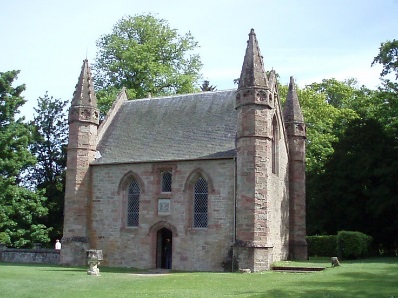James IV: Life Story
A Renaissance Prince
Chapter 4 : King in Training
On leaving the battlefield, James headed for Scone, where he was crowned on 24 th June 1488. There was nothing hole-and-corner about the coronation, but it was conducted by the Bishops of Glasgow and Dunkeld, rather than the senior churchman, the Archbishop of St Andrews, who had been a strong supporter of James III. Once James IV was crowned, the next step was to have his father buried. James III was interred next to his wife, Margaret of Denmark, at Cambuskenneth Abbey, not far from Stirling.

James was still only fifteen, and thus, to some degree, controlled by the men who had rebelled against his father. The influence of two of the chief rebels, the Earl of Bothwell (who had custody of the minor king and his brothers) and Lord Hume was initially strong and they gathered lands and offices as quickly as they could. The Earl of Angus does not seem immediately to have shared in the spoils.
This promotion of Bothwell and Hume was distasteful to the other nobles, such as the Earl of Lennox in south-west Scotland, and the Earl of Huntly in the north-east. Before long, Lennox and Huntly were in open rebellion. The plan was to abduct James, who was at Stirling.
James, always in the forefront of any action, rode out to meet the rebels and defeated them at the battle of Gartloaning which took place just west of Stirling. Nevertheless, there was still concern about the stranglehold that Bothwell and Hume had over the Government. A new Parliament was called in early 1490, and the representation on the King's Privy Council was extended to a wider group.
Still disgruntled, however, was the Earl of Angus. He was cheered by two events – his appointment as Chancellor at the end of 1492, and his wife's niece, Marion Boyd, becoming the first of James' many mistresses. Over the next three years, Marion bore James a son, Alexander, and a daughter, Katherine.
In these early days, James began the journeyings around his kingdom that would come to characterise his reign. This was partly to make his seem as different as possible from his father, who had been disapproved of, in part, for his inclination to stay in Stirling or Edinburgh, surrounded by his particular favourites, rather than showing himself to his people and building relationships with his nobles.
However James IV was, by nature, an extraordinarily active man, and seldom stayed more than a week or two in any location, often moving on after a day or two.
He also soon showed an interest in naval affairs. The difficult terrain of Scotland necessitated frequent sea-travel and James became fascinated by ships and their potential as military weapons.
Another of James' trademarks was the frequency and thoroughness with which he carried out his role as giver of Justice. South of the Border, kings had stopped presiding over the courts some centuries previously, but this was still a key component of Scottish kingship. James was well-thought of for the thoroughness with which he would listen to the cases, and the generally wise decisions he made.



